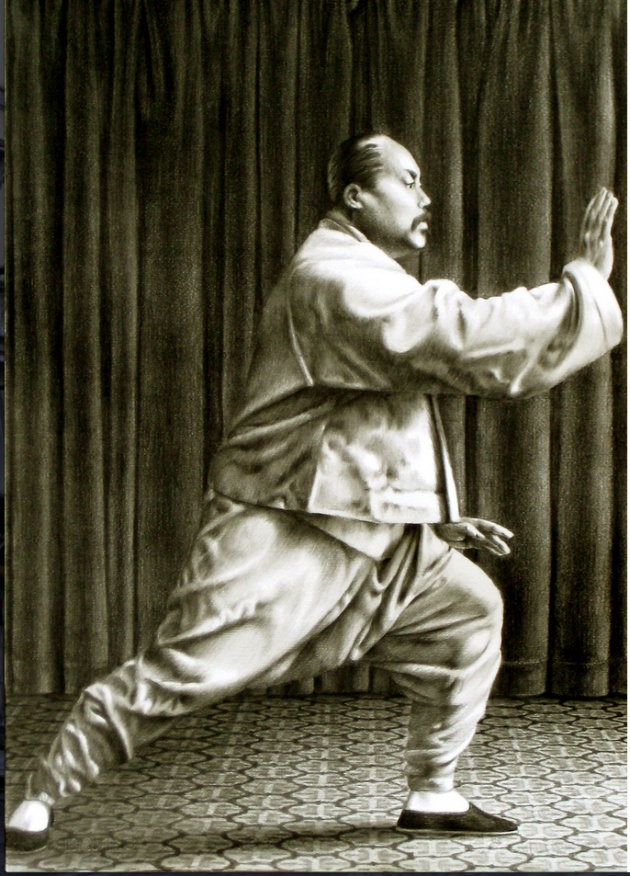
Il Tai Jii Quan, praticato in Cina da secoli, è ben conosciuto da coloro che amano le arti marziali.
E' uno stile morbido e lento. E proprio per questa sua caratteristica è particolarmente apprezzato dai praticanti del Kung fu che in tal modo possono addolcire il loro stile apparentemente privo di delicatezza.
La Cina è un enorme paese e pertanto gli stili di questa disciplina sono innumerevoli.
I più conosciuti sono:
lo stile 'Yang', forse il più praticato, è uno stile semplice, basato su movimenti standard con posizioni usate anche nel 'Kung Fu'. Il peso del corpo deve essere ben equilibrato. Le ginocchia piegate in modo da esaltare lo sforzo dei quadricipiti. La schiena deve essere ben dritta, il bacino sporto in avanti e le spalle rilassate. Varie "forme" o sequenze di movimenti stabiliti caratterizzano questo stile e per semplificazione si possono denominare "forma corta" , "forma media" e "forma lunga". Lo stile "Yang" prevede anche l'uso di armi quali la spada, il ventaglio, la lancia, la sciabola e la scimitarra o "dao".
Lo stile 'Wu' è simile allo 'Yang'. La posizione del corpo però è quasi del tutto eretta, con le ginocchia leggermente flesse.
Lo stile 'Chen' è il più difficile e il più marziale. Le gambe sono molto piegate e quindi la posizione del corpo risulta molto basse. Caratteristica di questo stile è il movimento con accelerazioni ed esplosioni di energia.
In tutti gli stili è molto importante la posizione del corpo. Altrettanto importante è il mantenimento della flessione delle gambe per restare sempre alla stessa distanza dal suolo per tutta la durata della forma.
Inoltre il respiro, effettuato con l'addome, deve essere controllato, fino ad essere in perfetta armonia con i movimenti.
Il Tai Jii Quan può essere praticato ad ogni età.
Pratico giornalmente da 14 anni il Tai Jii Quan e posso dire che mi ha aiutato ad ottenere un buon equilibrio tra mente e corpo.
Tai Jii Quan, practiced in China since centuries, is well known to those who are fond of martial arts.
It is a soft style and this peculiarity is appreciated by Kung Fu practicers so they can soften their style apparently lacking of softness.
China is a great Country, therefore styles of this discipline are many.
Most known are:
Yang style, maybe the most practiced; it is very simple, based on standard movements and positions are also used in Kung Fu, The body weight must be well balanced, the knees are bent thus distributing the weight on the quadriceps muscles. The back must be in upright position, the pelvis pushed forward and shoulders well relaxed. Several forms or sequences of movements characterize this style and to simplify we can call them short , medium and long forms. Arms such as sword, spear, sabre or scimitar are used in Yang style.
Wu style is similar to Yang, The position of the body is more erected and knees are slightly bent.
Chen style is the most difficult and the most martial. Legs are very bent and consequently the position of the body is low. Characteristic of this style is the movement with acceleration and explosions of energy.
While practicing Tai Jii Quan, the position of the body is very important, that means legs must be kept always with same flexion while performing the form.
Also the breath, using the abdomen, must be kept under control and must be in harmony with the movements.
Tai Jii Quan can be practiced at any age.
Personally I practice this discipline every day since 14 yers and I can say that helps to keep body and mind in balance.



